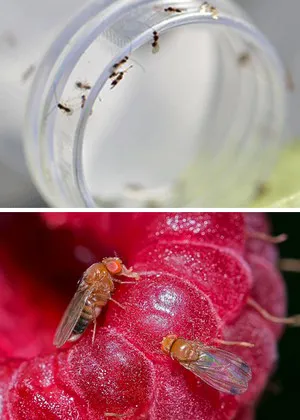 Some species of acetic acid bacteria (AAB) play relevant roles in the metabolism and physiology of Drosophila spp. and in some cases convey benefits to their hosts.
Some species of acetic acid bacteria (AAB) play relevant roles in the metabolism and physiology of Drosophila spp. and in some cases convey benefits to their hosts.Drosophila suzukii can harbour a set of AAB similar to those of other Drosophila species. Entomologists from Disafa at the University of Turin studied the possibility of using some AAB strains to produce volatile substances that attract female D. suzukii.
"We studied why D. suzukii prefer certain strains of AAB, then we characterised their volatile profiles to identify the attractive and non-attractive components produced by Acetobacter, Gluconobacter and Komagataeibacter."
D. suzukii had a preference for one strain of Komagataeibacter and two strains of Gluconobacter. Analyses of the volatile profiles from the preferred Gluconobacter isolates found that acetic acid is distinctively emitted even after 48 hours of bacterial growth, confirming the relevance of this volatile in the profile of this isolate for attracting flies. A different Komagataeibacter volatile compound was also identified as responsible for attracting D. suzukii. Moreover, a variation in the concentration of butyric acid derivatives found in some strains may influence the preference of D. suzukii.
Researchers reported that "our results indicate that Gluconobacter and Komagataeibacter strains isolated from D. suzukii have the potential to provide substances that could be exploited to develop sustainable mass-trapping-based control approaches."
Source: Mazzetto F., Gonella E., Crotti E., Vacchini V., Syrpas M., Pontini M., Mangelinckx S., Daffonchio D., Alma A., 'Olfactory attraction of Drosophila suzukii by symbiotic acetic acid bacteria', July 2016, Journal of Pest Science , Vol. 89(3), pag. 783-792. link.springer.com/article/10.1007/s10340-016-0754-7
